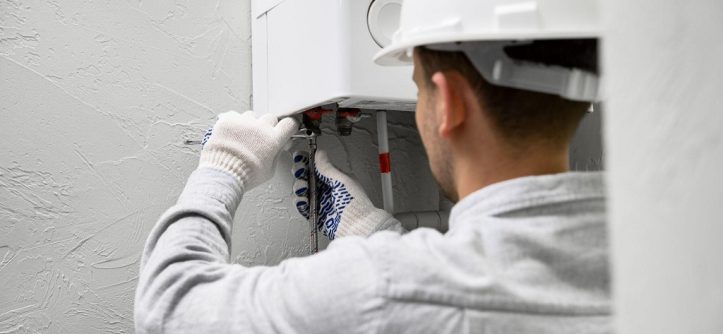Draining a water heater is a crucial plumbing maintenance task that keeps your unit running efficiently, extends its lifespan, and ensures your hot water stays clean and free of sediment. If you’ve never done it before, don’t worry. This guide will walk you through the process and answer common questions about the task.
Why You Should Drain Your Water Heater
Regularly flushing or draining a water heater is necessary for several reasons:
- Prevent Sediment Build-Up
Over time, minerals and debris from your water supply settle at the bottom of your water heater tank. This sediment can insulate the heating elements, forcing the unit to work harder and decreasing its efficiency.
- Extend the Lifespan of the Water Heater
Sediment build-up can cause corrosion inside the tank, leading to leaks and premature failure. Draining and flushing the water heater periodically helps protect its inner components.
- Improve Hot Water Quality
A dirty water heater tank can introduce impurities into your hot water supply, affecting its clarity and taste. Flushing the hot water heater ensures you have clean, safe hot water.
- Save on Energy Costs
A water heater with significant sediment build-up requires more energy to heat the water. Draining the water heater restores its efficiency, saving money on your utility bills.
How to Drain a Water Heater
Before starting, ensure your water heater is powered off to avoid potential hazards. Here’s a step-by-step guide:
What You’ll Need:
- A garden hose
- A bucket (optional)
- Safety gloves
- A flathead screwdriver (if necessary)
Step 1: Turn Off the Water Heater
- Electric Water Heaters: Shut off the power at the breaker box.
- Gas Water Heaters: Turn the gas supply to “Pilot” mode or shut it off completely.
Step 2: Shut Off the Cold Water Supply
Locate the cold water shut-off valve, usually near the top of the water heater, and turn it off to stop water flow into the tank.
Step 3: Connect a Garden Hose
Attach a garden hose to the drain valve, which is located near the bottom of the tank. Extend the hose to a safe draining location, such as a driveway, or use a bucket for controlled drainage.
Step 4: Open the Drain Valve
- Place a bucket under the valve if not using a hose.
- Slowly open the valve using a flathead screwdriver if needed. Allow the water to flow out.
Step 5: Open a Hot Water Faucet
To prevent a vacuum in the system, turn on a hot water faucet in your home. This allows air into the tank, ensuring a smooth draining process.
Step 6: Flush the Water Heater (Optional)
To remove remaining sediment:
- Reopen the cold water supply briefly while the drain valve is still open. This will stir up sediment at the bottom of the tank.
- Close the cold water supply and allow the water to drain again.
Step 7: Close the Drain Valve and Refill
Once the water runs clear, close the drain valve tightly and disconnect the hose. Reopen the cold water supply to refill the tank. Leave the hot water faucet open until water flows steadily, indicating the tank is full.
Step 8: Restore Power or Gas
Turn the power back on for electric water heaters or reignite the pilot for gas models. Ensure the heater is functioning properly.
FAQs: Draining a Water Heater
- How often should I drain my water heater?
It’s recommended to drain your water heater at least once a year. If you live in an area with hard water, you may need to flush the hot water heater every six months.
- Is it safe to drain a water heater myself?
Yes, but always take precautions like shutting off power or gas and using proper tools. If you’re unsure, consult a professional.
- What happens if I don’t drain my water heater?
Failure to flush or drain a water heater can lead to excessive sediment build-up, reduced efficiency, higher energy bills, and potential damage to the tank.
- Can I flush a water heater without draining it completely?
Yes, a partial flush can help remove some sediment, but a full draining and flushing process is more effective for deep cleaning.
- How can I tell if my water heater needs flushing?
Signs include rumbling noises from the tank, inconsistent hot water temperatures, or reduced hot water capacity.
Draining a water heater is a simple task that pays off in improved performance and longer lifespan. With this guide, you can flush your water heater safely and effectively. If you’re not comfortable performing this maintenance yourself, call a professional to ensure the job is done correctly. Regular care for your water heater ensures reliable hot water and lower energy costs for years to come.




